Desk of Contents:
- Introduction to Metaverse
- Key Components of the Metaverse
- Major players in the Metaverse
- The Role of Cryptocurrencies in the Metaverse
- Applications and Use Cases of the Metaverse
- Challenges and Future of the Metaverse
Welcome to the world of the Metaverse! The technology is continuing at its unprecedented, phenomenal rate, and along with it, the Metaverse stands at the next level of the big digital frontier. It is just not a passing trend, Metaverse is the future of how we will work, play, and interact. In this blog post, we will dive deep into the Metaverse, from history to components, major players, investment opportunities, and much more.
Let’s start our journey into the Metaverse!
1. Introduction to the Metaverse:
The term Metaverse has been getting thrown around in every conversation tech conferences to financial discussions. But what does it really mean? Is it just one of these buzzwords and not a realization of some new fundamental change in how we see and interact with digital environments?
What is the Metaverse?
Picture Courtesy: excellentwebworld.com
Metaverse is a collective virtual shared space that merges physical reality with augmented and virtual reality, creating a fully immersive digital experience. Imagine logging into a digital world-not just through a screen but in a space where you can interact with other people, digital assets, and environments in real time.
This virtual world is not solely for the purposes of playing or socializing but serves as a platform through which work, education, entertainment, commerce, and many other things could potentially be conducted. There are limitless possibilities for innovation and creativity that result from this digital real estate to virtual concerts within the Metaverse.
History and Evolution of the Metaverse:

Picture Courtesy: blog.capitalwallet.com
The concept of the Metaverse is not entirely new. Instead, it has been developing since the early days.
Early Beginnings: The Seeds of the Metaverse
The concept of a virtual reality universe itself was first conceptualized through science fiction. In 1992, Neal Stephenson’s novel Snow Crash introduced the term “Metaverse,” referring to a virtual reality space where humans, manifested in the form of avatars, communicate and interact with the digital world and each other. This sparked imaginations and laid the conceptual foundation for the Metaverse we are familiar with today.
From Fiction to Reality: How the Metaverse Emerged
In the 21st century, virtual environments such as Second Life and early social platforms, such as Facebook, showed a glimpse of the interconnected virtual world that could exist. However, this beginning was shaped when technologies like VR, AR, and blockchain started taking forms that would eventually shape the Metaverse.
Watching the pace at which Facebook (now Meta), Microsoft, and other gigantic companies pursue the Metaverse concept, we see how science fiction becomes real technology. It’s a space of utterly felt rather than merely visual experience- integral and immersed in our lives.
How Does the Metaverse Work?

Picture Courtesy: 101blockchains.com
To move around in the Metaverse, people will often require access devices such as VR headsets, AR glasses, and high-powered computers that support an immersive environment. They may use avatars to travel from virtual space to virtual space and attend events, buy and sell products, or create original content.
A. Virtual Worlds:
The platforms that allow users to build, buy, or sell virtual land and assets are Sandbox, Roblox, and Decentraland. The worlds run on the blockchain, which ensures ownership and uniqueness of digital goods.
B. Cryptocurrency and Blockchain:
The use of blockchain ensures the secure and transparent transaction of assets ranging from virtual land to digital fashion. Meanwhile, cryptocurrencies enable the users’ decentralized means of making transactions within the Metaverse.
C. Smart Contracts:
These are self-executing contracts that enable the seamless and secure exchange of assets and services in the Metaverse. Smart contracts are commonly used to buy land, sell NFTs, and transfer ownership rights of digital goods.
D. Social Interaction:
Users can now socialize beyond just visiting virtual spaces. They could chat, attend virtual parties, and engage in social collaboration in learning, working, or even gaming.
Metaverse vs. Virtual Worlds: What is the Difference?
Although the terms “Metaverse” and “virtual worlds” are mostly used interchangeably, there is a distinction hidden in the semantics. A virtual world refers to a single digital environment where one can interact and engage; on the other hand, the Metaverse refers to a network of interconnected virtual worlds. Hence, the Metaverse is a more comprehensive concept more expansive and integrated than individual virtual worlds.
Why Does the Metaverse Matter?
The Metaverse is a potential game-changer in terms of how people interact with the digital world and how businesses engage with consumers. It provides novel forms of entertainment, socialization, and commerce and promises to blur the boundaries between reality and virtuality. Whether for work, education, or leisure, the Metaverse represents a digital ecosystem in which people can experience activities and emotions in the same way as if they were directly in the physical world.
The Metaverse is likely to become a part of our everyday life just as the internet has transformed companies and individuals pouring more investment into this space, from offices in cyberspace to gaming and way beyond, reshaping the globe’s digital communication patterns.
2. Key Components of the Metaverse:

Picture Courtesy: systango.com
The Metaverse is a multidimensional digital environment comprising various technologies dovetailing with one another to create a well-organized immersive, interconnected virtual world. Each of these components plays a critical role in providing an intended seamless, interactive, and decentralized experience of the Metaverse. Here are the major components of the Metaverse:
A. Virtual Reality and Augmented Reality:
In the center of the Metaverse lie the immersive technologies such as virtual reality and augmented reality that make it possible for the user to see and experience the virtual world.
Virtual reality generates fully digital environments, such as Oculus Rift, HTC Vive, or Meta Quest headsets. These are meant to enable users to immerse themselves in virtual space by attending events, playing games, or even socializing with other users by creating avatars that interact as humans would.
Augmented reality is an overlay of digital elements onto the real-world using devices such as smartphones, tablets, or AR glasses, for example, Microsoft HoloLens. It fills in the gap between the physical and virtual worlds by enhancing the real world with digital elements such as 3D objects or holograms. For example, AR can be used to decorate a room with virtual art or try on digital clothing before purchasing.
B. Blockchain Technology and Cryptocurrencies:
Blockchain is the foundation of the Metaverse, ensuring that ownership is decentralized, transactions are secure, and interoperability between platforms is possible.
Blockchain is a distributed ledger that securely and transparently records transactions. It allows for the creation and ownership of digital assets such as NFTs and virtual real estate and facilitates trustless transactions that do not require intermediaries. This also supports the decentralization of virtual worlds, ensuring no single entity can have total control.
The use of cryptocurrencies like Bitcoin, Ethereum, and Metaverse-specific tokens like SAND and MANA powers transactions in virtual spaces. These digital currencies are used to purchase virtual goods, land, and services, thus fostering a self-sustaining economy in the Metaverse and enabling value transfers across platforms.
C. Digital Assets and NFTs:
Ownership in the Metaverse is, by and large, defined by digital assets and non-fungible tokens, or NFTs. Digital assets represent any creation, purchase, or sale made within the Metaverse-such as virtual land, digital clothing, or gaming items. They contribute to personalization, allowing people to express themselves and have a unique experience.
NFTs are unique, non-divisible digital tokens held on the blockchain to signify ownership of a given asset. They establish ownership of digital objects such as art, collectibles, or property, enable creators to monetize their work by selling and earning royalties on it, and facilitate interoperability, meaning NFTs can be used across different Metaverse platforms. For instance, a digital land parcel in Decentraland or a custom skin in Fortnite may be represented as an NFT, ensuring its uniqueness and ownership by the user.
D. Interoperability and Standards:
A unified and connected Metaverse relies on interoperability, which enables seamless moves of assets, identities, and data between platforms. Open protocols, such as ERC-721 for NFTs and ERC-20 for tokens, ensure that a virtual space can work within another virtual space because a user’s avatar, his assets, and digital identity can function across various environments in the Metaverse and create a more integrated and cohesive ecosystem. For example, the avatar created in The Sandbox can be used in Decentraland or any other Metaverse platform that supports the same standards.
E. Artificial Intelligence (AI):
AI plays a vital role in creating intelligent, responsive, and personalized experiences within the Metaverse. It helps generate lifelike avatars with unique features and emotions, powers non-player characters (NPCs) that interact with users in real time, and drives algorithms that suggest tailored content such as events, virtual goods, or social connections. For instance, AI can enable virtual assistants within the Metaverse to guide users or help them navigate complex environments.
F. Cloud Computing and Edge Computing:
The Metaverse requires enormous computing power to render high-quality, real-time virtual experiences. Cloud computing stores and processes huge amounts of data remotely, which makes scalable and efficient virtual worlds possible, and allows access to the Metaverse from multiple devices without requiring high-end hardware. Edge computing brings computation closer to users, reducing latency and ensuring smooth, real-time interactions in the Metaverse. These technologies together ensure that the Metaverse remains accessible, responsive, and immersive.
G. Networking and 5G Technology:
For an immersive Metaverse, there is a need for ultra-fast, low-latency networks. Very fast internet is essential for transferring enormous data in real-time and facilitating multiplayer interactions, streaming, and VR experiences. With the advent of 5G networks, connectivity is faster and more stable. This makes engaging activities like virtual meetings, gaming, and live events much more enjoyable and accessible.
H. Internet of Things (IoT):
IoT merges with the Metaverse by connecting real-world devices into the Metaverse. Thus, IoT will allow real-time transfer of data between real and virtual worlds. For example, one can change a smart home’s temperature, lighting, and security setting via a virtual interface of Metaverse. In the near future, IoT could use physical movements and gestures to control virtual objects or avatars, which will greatly enhance immersion.
I. Social Interactions Platforms:
The core of Metaverse is social interaction by which users connect, interact, and collaborate. Its platforms include Roblox, Horizon Worlds by Meta, as well as VRChat, offering the opportunity for users to socialize, attend an event, or create any shared experience. These priorities are community building and creating user-generated content, boosting engagement and collaboration.
J. Economy and Governance:
The Metaverse is an economy where users can earn, trade, and spend. Backed by cryptocurrencies, NFTs, and digital services, the Metaverse fuels a very active marketplace. There, users can create content, sell goods, or offer services for income generation. Most of the Metaverse platforms apply DAOs for decision-making. This allows users to vote on the policies within the platform, making sure that the Metaverse stays community driven.
3. Major Players in the Metaverse:
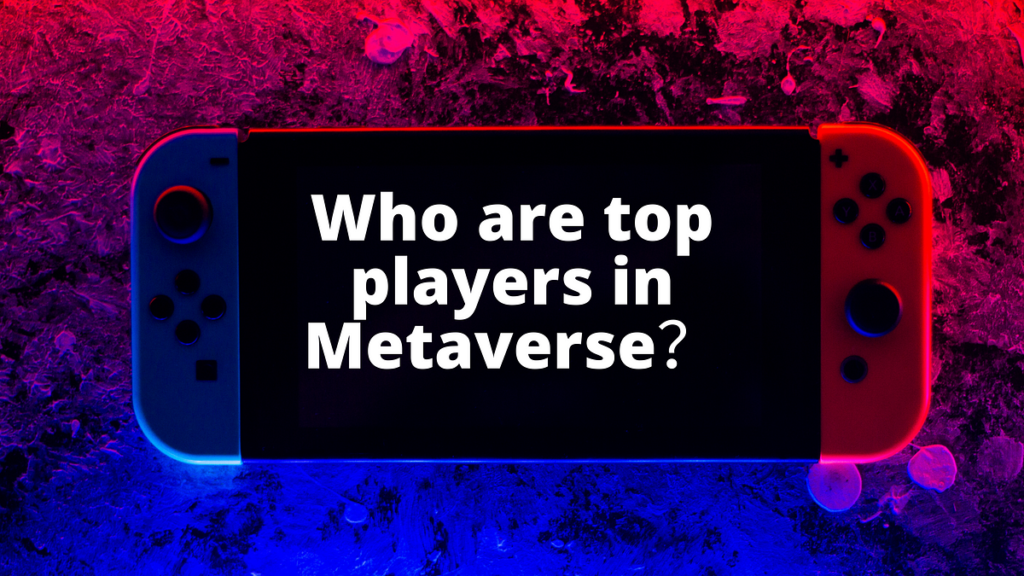
Picture Courtesy: superchaincapital.medium.com
The Metaverse, a sprawling digital ecosystem, has attracted the attention of industry giants, innovative startups, and tech pioneers alike. These organizations are actively shaping the future of the virtual world, developing platforms, technologies, and experiences that are revolutionizing how we interact, create, and live online. Let’s explore some of the major players driving the Metaverse’s growth.
A. Meta (Formerly Facebook):

Picture Courtesy: tentango.com
Meta has positioned itself as a leader in the Metaverse with a strong focus on building interconnected virtual spaces where people can work, socialize, and play. The company has invested heavily in virtual reality (VR) and augmented reality (AR) technologies.
Meta’s flagship VR platform is Horizon Worlds, where it allows users to create, explore, and interact within a virtual environment. With Oculus VR headsets, Horizon Worlds provides an immersive social experience. Beyond entertainment, Meta also develops Metaverse applications in business through Horizon Workrooms, where teams can work together in virtual offices.
In addition, Meta has invested billions of dollars into research and development through its Reality Labs division, which is working toward the development of next-generation AR and VR devices and interfaces.
B. The Sandbox:

Picture Courtesy: tentango.com
The Sandbox is a decentralized, blockchain-based platform that enables users to create, own, and earn from virtual experiences. It’s highly known for user-generated content and community-driven activities.
In The Sandbox, users can purchase virtual land parcels as NFTs, develop them into custom spaces, and trade them on the platform’s marketplace. The native cryptocurrency, SAND, powers the platform’s economy, enabling transactions for land, avatars, and digital assets.
Major partnerships with celebrities and brands, such as Snoop Dogg and Adidas, have solidified The Sandbox’s position as a leading Metaverse platform.
C. Roblox:
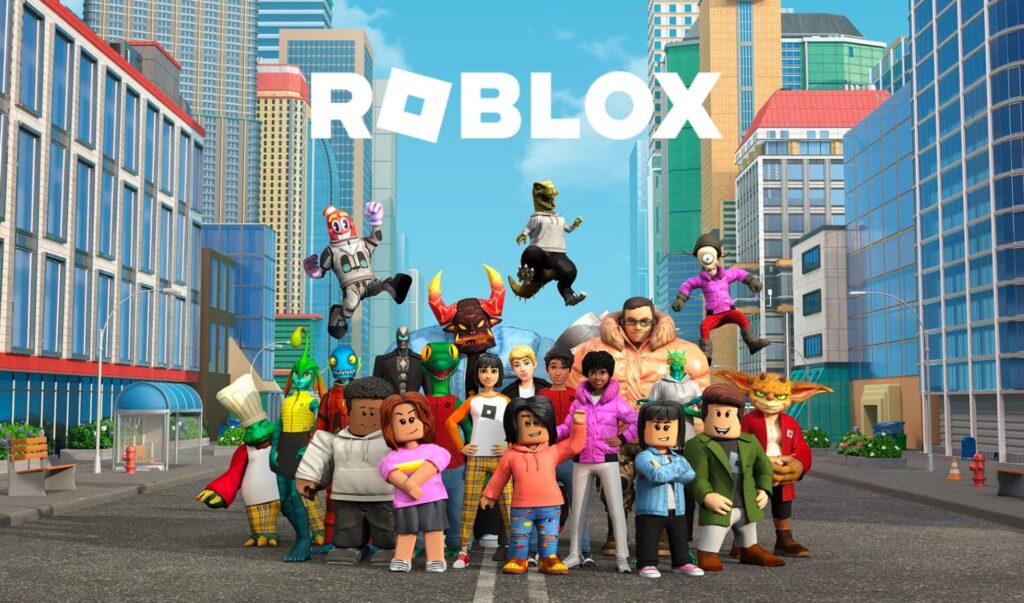
Picture Courtesy: tubefilter.com
Roblox is one of the pioneers in user-generated content and gaming experiences in the Metaverse. It hosts a huge number of users, especially among the youth, and is a hub where developers can create and generate revenue from their games and experiences.
Roblox allows its users to create virtual worlds and interact with them using their own avatars. It provides in-platform currency, such as Robux, through which users can pay for digital items, game enhancements, and premium membership.
Roblox is more than a gaming platform, evolving to become a social space for virtual concerts, educational programs, and even corporate events. The adaptability and dynamic nature of the creator community are among the strong reasons for why it has become one of the best players in the Metaverse.
D. GMK Metaverse:

GMK Metaverse is a new platform that is quickly gaining recognition for its innovative approach to creating virtual spaces. Focused on seamless interoperability, GMK will connect users across various Metaverse environments while offering unique experiences tailored to different industries.
The platform emphasizes user-centric designs and robust blockchain integration to ensure ownership and security. GMK Metaverse is actively exploring applications in gaming, virtual commerce, and digital real estate, targeting both casual users and enterprises. Though newer than other players, GMK’s potential lies in its commitment to building scalable, accessible virtual ecosystems.
E. Microsoft:
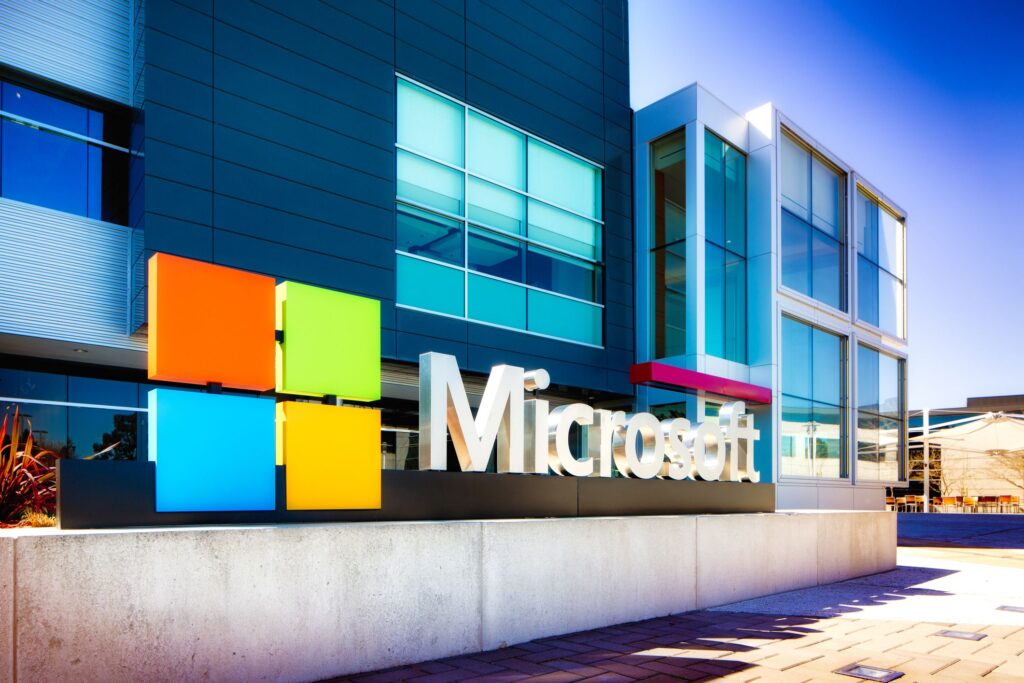
Microsoft is using its software and cloud computing to create a chunk of Metaverse space. Its Mesh for Teams will combine AR and VR in workplace collaboration, where teams can meet in shared virtual spaces.
The company has also acquired AltspaceVR, a virtual reality social platform, to boost its efforts in providing immersive communication tools. Microsoft is also looking into Metaverse applications for industrial and enterprise use cases, such as virtual training programs and digital twins, through its Azure cloud services.
F. Decentraland:
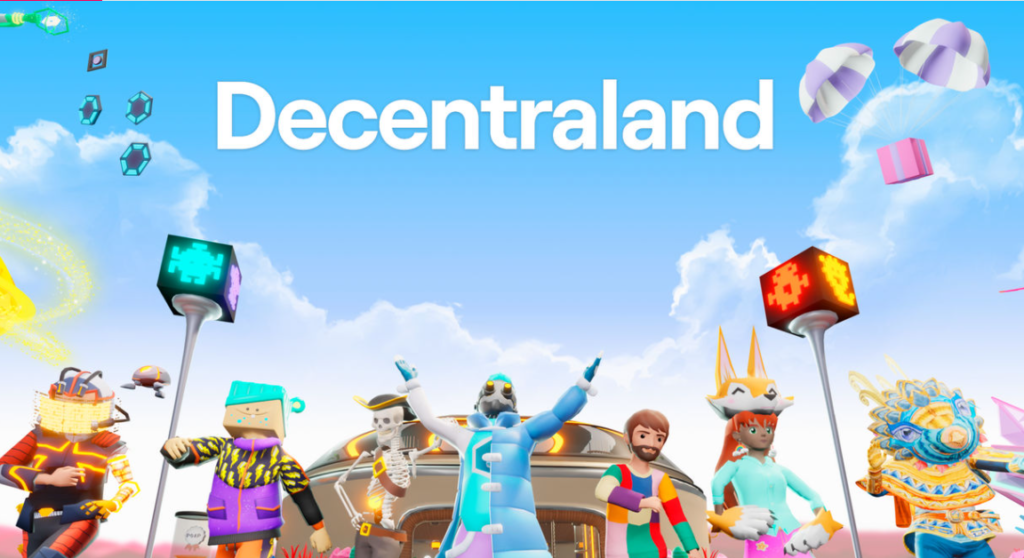
Decentraland is one of the first fully decentralized Metaverse platforms, run by its users through a decentralized autonomous organization (DAO). Decentraland is built on the Ethereum blockchain, where users can buy, sell, and build on virtual land parcels represented as NFTs.
The native cryptocurrency of the platform, MANA, is used for transactions, such as buying land, goods, and services. Decentraland has hosted large-scale virtual events, including music festivals and fashion shows, demonstrating its potential as an entertainment and marketing space. The focus on decentralization is in line with the principles of Web3, so it is popular among blockchain enthusiasts.
G. Nvidia:

Picture Courtesy: jalnaaneshia.blogspot.com
Not a traditional Metaverse platform, Nvidia is essential for providing the infrastructure necessary to power the Metaverse. Omniverse allows creators and developers to collaborate on real-time 3D designs, simulations, and virtual environments.
NVIDIA is an advanced technology leader, creating the world’s greatest gaming GPUs and AI technology required for rendering these complex visualizations and simulations that describe the Metaverse. To help the advancement of Metaverse’s underlying technologies, the company provides interoperable tools that connect separate virtual worlds and applications.
H. Epic Games:

Picture Courtesy: buscape.com.br
Epic Games, the maker of Fortnite, has been at the forefront of mixing entertainment, socializing, and virtual experiences. Millions witnessed live virtual events such as Travis Scott and Ariana Grande concerts through Fortnite, hence the possibility of mass engagements in the Metaverse.
Epic Games is utilizing Unreal Engine, the leading 3D creation tool, in the building of Metaverse environments and experiences. The company is putting substantial investments into Metaverse initiatives with the support of sizeable funding from partners like Sony.
I. Amazon and Google:
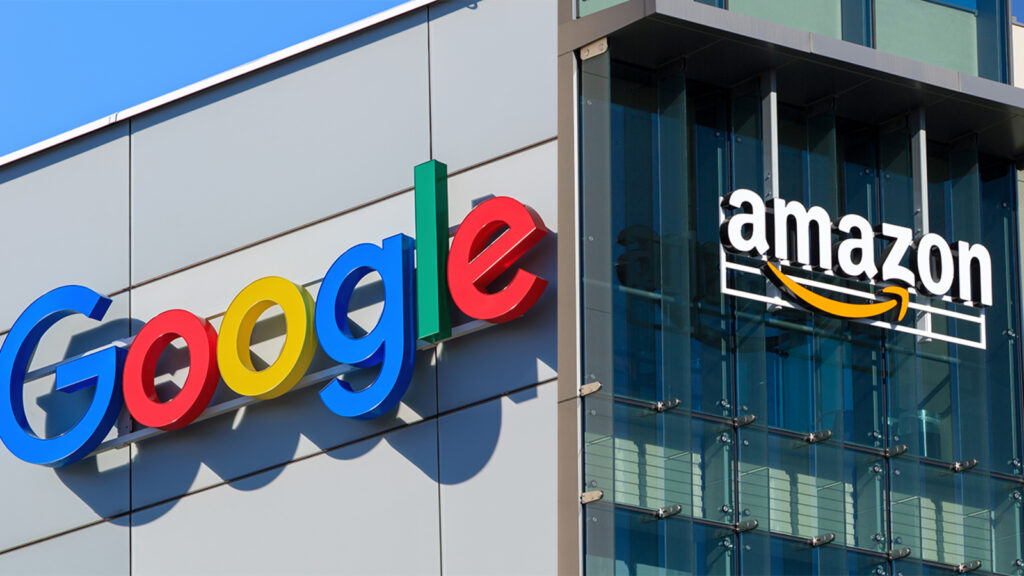
Picture Courtesy: abc13.com
Amazon and Google, though not directly Metaverse companies, play a vital role in its development through cloud computing and AI services. Google’s ARCore and Amazon’s AWS (Amazon Web Services) provide the infrastructure needed to host and scale virtual experiences. The two companies are also exploring AR and AI tools that may improve user interactions within the Metaverse.
J. Tencent:
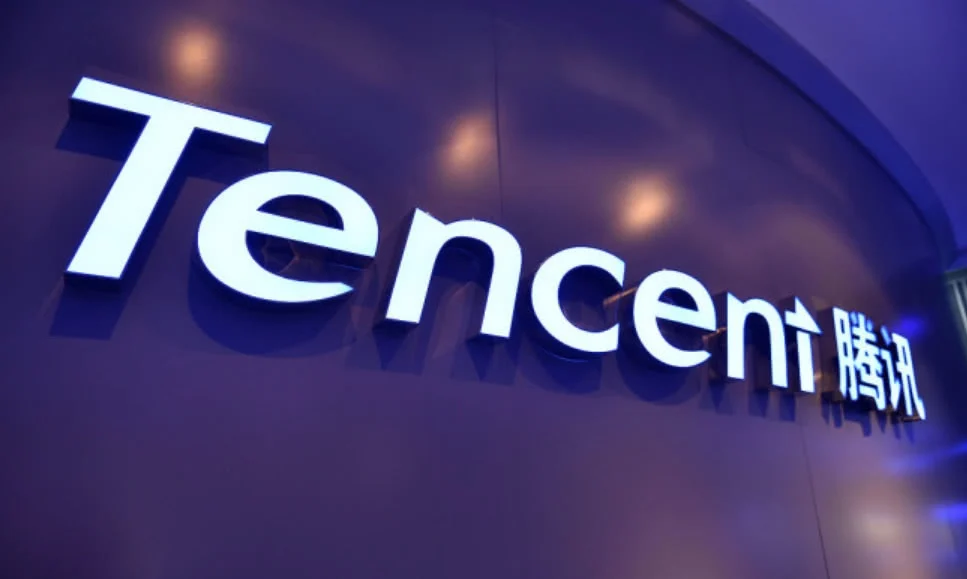
Picture Courtesy: Gizmochina
Tencent is a Chinese tech giant that invests in gaming, social media, and virtual goods. It is one of the major players in the Metaverse space, and its platforms, such as WeChat and partnerships with gaming companies, make it a central figure in Asia’s Metaverse ecosystem. Tencent is also working on developing virtual environments for entertainment and commerce.
4. Investing in the Metaverse:

Picture Courtesy: cashify.in
The Metaverse is more than just a technological marvel; it’s also a rapidly emerging investment frontier. With industries integrating virtual worlds into their operations, many see the Metaverse as a lucrative space for growth and innovation. Whether you’re a seasoned investor or new to the game, understanding the opportunities and risks involved is crucial.
Why Invest in the Metaverse?
The Metaverse is the new paradigm, much like the internet revolution of the late 1990s. It promises to change the way we work, socialize, shop, and entertain ourselves. The industries involved—gaming, real estate, virtual commerce, and more—are projected to grow exponentially. For investors, this translates into opportunities to be early adopters in what could become a trillion-dollar economy.
Key Investment Opportunities in the Metaverse:
A. Metaverse Stocks:
Many publicly traded companies are quite invested in building or supporting the Metaverse, so their stocks are a pretty attractive option for investors.
Meta (Facebook): They have made massive investments in VR, AR, and social virtual platforms. Oculus is central to its Metaverse strategy, along with Horizon Worlds.
Nvidia: A key player that provides GPUs and AI-driven solutions for Metaverse development. Its Omniverse platform is a game-changer for creators.
Roblox Corporation: A Metaverse pioneer with its user-generated gaming platform, Roblox is a favorite among young audiences and creators.
Unity Software: Developers rely on Unity’s real-time 3D engine to build immersive Metaverse experiences.
B. Virtual Real Estate:
Digital land has become a highly sought commodity in platforms like The Sandbox and Decentraland. Investors are buying parcels as NFTs and either building it into virtual experiences or waiting for future resale. This is driving the demand by companies and brands for renting digital space for events, advertising, and storefronts.
C. Cryptocurrencies and Tokens:
Cryptocurrencies are the base layer that makes up the Metaverse economy, providing means to transact, govern, and reward.
SAND: The native coin of The Sandbox, with which people purchase land, assets, and services.
MANA: Mana is the native coin of Decentraland, power source to its ecosystem.
AXS (Axie Infinity): A gaming token linked with one of the most well-known play-to-earn platforms.
There are investment opportunities to acquire and hold these coins or use them within the applications to make money
D. NFTs (Non-Fungible Tokens):
From digital art to virtual goods, NFTs constitute a pillar of Metaverse commerce. While high-profile sales get the headlines, more affordable entry points for the new investor exist in the form of NFTs. Popular categories with burgeoning value include virtual collectibles, in-game items, and avatar accessories.
E. ETFs and Funds:
For a diversified strategy, Metaverse-focused ETFs provide exposure to various companies that are involved with the Metaverse. There are:
Roundhill Ball Metaverse ETF (META): Tracks companies in numerous Metaverse-related sectors that include gaming, VR, and cloud computing.
ProShares Metaverse ETF: Seeks to track stocks closely linked to AR, VR, and digital ecosystems
Benefits of Investing in the Metaverse:
First-Mover Advantage: The Metaverse is still in its infancy, offering ground-floor opportunities to early investors.
Diverse Investment Options: Stocks, crypto, NFTs, and real estate provide multiple avenues for investors to diversify their portfolios.
High Growth Potential: Industries tied to the Metaverse are projected to experience rapid growth, leading to potentially high returns.
Risks and Challenges of Metaverse Investments:
Volatility: Cryptocurrencies and NFTs, in particular, are highly volatile and subject to speculative price swings.
Regulatory Uncertainty: Governments are still defining policies around virtual assets, which could impact investments.
Market Maturity: The Metaverse is evolving, and not all projects or companies will succeed in the long term.
Technological Barriers: Widespread adoption depends on advancements in VR/AR devices, blockchain scalability, and internet infrastructure.

Picture Courtesy: medium.com
Cryptocurrencies are the financial backbone of the Metaverse, enabling seamless transactions, ownership, and governance within virtual ecosystems. They integrate economic systems into these digital worlds, allowing users to trade, earn, and invest in virtual goods and experiences. Let’s explore how cryptocurrencies shape and empower the Metaverse.
Why Cryptocurrencies Are Essential in the Metaverse:
Cryptocurrencies serve as the primary medium of exchange within the Metaverse, allowing for the buying and selling of virtual goods, services, and assets. Unlike traditional currencies, they operate on blockchain technology, ensuring decentralization, transparency, and security.
In the Metaverse, crypto enables:
Ownership of Digital Assets: Blockchain technology records ownership of virtual goods, ensuring that users have verifiable and secure possession.
Interoperability: Cryptocurrencies allow users to move assets and value across different Metaverse platforms seamlessly.
Decentralized Governance: Token holders can participate in the decision-making processes of Metaverse projects.
Key Cryptocurrencies Powering the Metaverse:
Cryptocurrency is powering metaverse and boosting the digital world together. Let’s figure out how they are doing it.
A. SAND (The Sandbox):
The native token of The Sandbox, SAND, is used for buying virtual land, avatars, and assets within the platform. It also facilitates staking, governance, and earning rewards.
B. MANA (Decentraland):
MANA powers the Decentraland ecosystem, enabling users to purchase virtual land parcels and in-game items. It is also used for voting on platform developments through Decentraland’s decentralized autonomous organization (DAO).
C. AXS (Axie Infinity Shards):
AXS is the governance token of Axie Infinity, a play-to-earn Metaverse platform. Players use AXS to participate in decision-making, stake for rewards, and transact within the ecosystem.
D. ENJ (Enjin Coin):
Enjin Coin supports the creation and management of NFTs within the Metaverse. Developers use ENJ to mint NFTs that can be integrated into games and virtual worlds.
E. ETH (Ethereum):
Ethereum is the blockchain of choice for many Metaverse projects. Its smart contract capabilities make it ideal for hosting decentralized applications, NFTs, and tokens.
How Cryptocurrencies Work in Virtual Worlds:
There are some ways crypto works in the virtual world.
A. Transactions and Payments:
In the Metaverse, cryptocurrencies facilitate the exchange of goods and services, such as purchasing virtual real estate, clothing for avatars, or tickets for virtual events.
B. Play-to-Earn Models:
Play-to-earn games like Axie Infinity and The Sandbox reward players with crypto for participating in activities, creating a unique economic model where users earn real-world value.
C. Tokenized Ownership:
Cryptocurrencies enable users to own unique digital assets like NFTs, which can represent anything from virtual art to land. These assets are stored securely on the blockchain and can be traded or monetized.
D. Staking and Rewards:
Users can stake their cryptocurrencies within Metaverse platforms to earn passive income, governance rights, or in-game advantages.
Integration of Crypto and Blockchain in the Metaverse:
Cryptocurrencies rely on blockchain technology, which provides the infrastructure for decentralized and secure transactions. Here’s how blockchain supports the Metaverse:
Transparency: All transactions are recorded on a public ledger, ensuring fairness and accountability.
Security: Blockchain protects assets against fraud and hacking through cryptographic methods.
Interoperability: Blockchain enables assets and currencies to move across platforms, fostering a connected Metaverse ecosystem.
Smart Contracts: These self-executing contracts automate transactions and agreements, reducing the need for intermediaries.
6. Applications and Use Cases of the Metaverse:
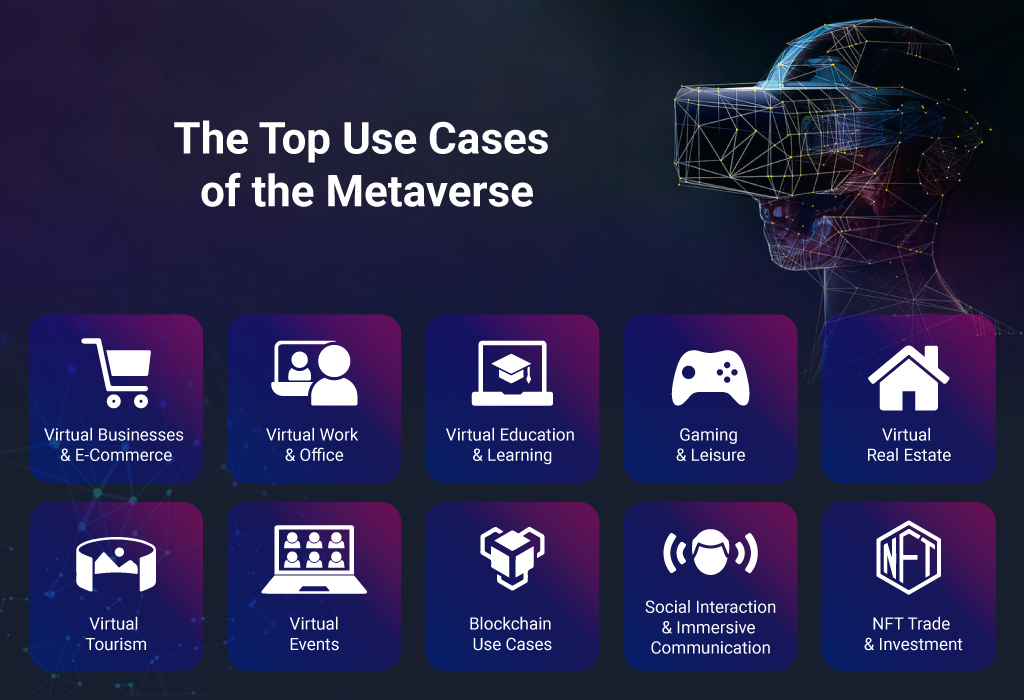
Picture Courtesy: dreamcast.co
The Metaverse is more than just a digital playground—it’s a transformative space reshaping industries and everyday experiences. From gaming and social interaction to education and healthcare, the Metaverse offers diverse applications that redefine how we live, work, and connect. Let’s explore some of its most prominent use cases.
A. Gaming: A Pioneer in the Metaverse
Gaming is one of the first and most engaging uses of the Metaverse. The vast virtual worlds such as Roblox, The Sandbox, and Fortnite let the user interact, compete, and create within massive digital realms. In Axie Infinity, the P2E models permit the earning of real money from in-game rewards through play-to-earn schemes, and therefore gaming might be a source of income. Other than these, Minecraft and Roblox are enabling the players to design and monetize their experiences; hence, gaming is crossing over into digital entrepreneurship.
B. Socializing in the Metaverse:
The Metaverse revolutionizes socialization since it lets users connect as avatars in virtual spaces. Environments like VRChat and Horizon Worlds let the user meet, chat, and explore together. This extends beyond casual hangouts; virtual concerts and events are also becoming popular. Artists such as Travis Scott and Ariana Grande hosted virtual concerts in Fortnite that drew millions of attendees worldwide. Corporate meetings have also taken on the Metaverse. Virtual offices and meeting rooms are an engaging alternative to video calls.
C. Virtual Real Estate:
This house has the fastest growth through Metaverse since users and corporations are buying land and homes there. Decentraland and The Sandbox are those portals where they have an opportunity to claim lands, build them, sell, and make money at times. Companies are finding their way to set up virtual storefronts and offices with distinct customer experiences as well. Virtual spaces, too, are rented to events, exhibitions, or even social gatherings, resulting in a strong economy over virtual property.
D. Education and Training:
The Metaverse is changing learning to be more interactive and accessible. Virtual classrooms, for example, on platforms like EngageVR, allow students to attend classes from any corner of the world. In skill training, simulations in medicine and aviation allow trainees to practice in realistic scenarios without risks in the real world. Cultural experiences are also improved, as students can tour virtual museums, historical sites, and other educational resources globally, enriching their learning journeys.
E. Healthcare and Therapy:
The healthcare industry is using the Metaverse for groundbreaking treatments and support. Virtual consultation services allow patients to safely interact with doctors in an immersive environment, eliminating geographical restrictions. Therapy sessions in virtual environments, especially VR therapy, help manage PTSD, anxiety, and other phobias by providing controlled scenarios. Rehabilitation programs are also using virtual exercises and games to assist patients in their physical therapy and recovery.
F. Retail and Virtual Commerce:
Shopping in the Metaverse is a unique, interactive experience. Brands such as Gucci and Nike have already set up digital stores from which users can buy physical and virtual items. Avatars can try on clothes or test products in virtual environments to make the shopping experience better. Exclusive digital goods are also sold, often in the form of NFTs, so that customers can own unique collectibles that blur the lines between traditional commerce and digital ownership.
G. Entertainment and Media:
The Metaverse expands entertainment horizons. Users get to engage in immersive cinema and TV series where they are a part of the storyline. Interactive storytelling is taking on platforms such as The Sandbox, enabling creators to develop narrative-based games and experiences. Live sports and events also have a change, as fans watch their favorite games from virtual stadiums that offer more immersive settings.
H. Industrial and Enterprise:
Businesses are using the Metaverse for efficiency and innovation. Virtual workspaces, like Microsoft Mesh, create a collaborative environment for remote teams. Industries such as manufacturing and defense are utilizing immersive simulations for workforce training. Product design and prototyping also benefit from VR environments, where companies can design and test products in a collaborative manner without physical prototypes.
I. Finance and Banking:
The Metaverse changes financial services through decentralized services. Virtual banking services are surfacing where users can manage their finances in immersive environments. Applications using DeFi are also embedding themselves into the Metaverse, giving users lending tools, borrowing tools, and trading tools so that they can participate in different virtual economies. Innovations like these ensure financial service delivery is accessible and effective in digital ecosystems.
J. Marketing and Advertising:
The Metaverse offers new forms of engagement for brands with the audience. Experiential marketing campaigns are immersive experiences through virtual games, events, and interactive environments designed to create brand experiences. Targeted ads are becoming more personalized based on user behavior and preferences in virtual spaces. Virtual influencers and avatars are being used to promote products to an ever-expanding digital audience, further enhancing the visibility of the brand.
7. Challenges and Future of the Metaverse:

Picture Courtesy: bap-software.net
As the Metaverse continues to evolve, it promises to transform how we interact, work, and entertain ourselves in digital environments. However, this transformation is not without its hurdles. From technological limitations to ethical dilemmas, the Metaverse faces numerous challenges. At the same time, its future brims with opportunities and potential for innovation. Let’s explore the major challenges and what the future might hold for this burgeoning digital universe.
Key Challenges in the Metaverse:
There are challenges in the metaverse. Let’s explore that,
A. Technological Limitations:
The Metaverse relies heavily on advanced technologies like virtual reality (VR), augmented reality (AR), and blockchain. However, these technologies are still evolving. VR and AR devices, while improving, are often expensive, bulky, and require significant computing power. Additionally, internet infrastructure in many regions is not yet capable of supporting the high-speed, low-latency connections needed for seamless Metaverse experiences.
B. Interoperability Issues:
For the Metaverse to succeed as a cohesive digital universe, it must ensure interoperability between different platforms and systems. Currently, many virtual worlds operate as isolated ecosystems. Achieving seamless integration, where users can move assets, identities, and experiences across platforms, remains a complex technical challenge.
C. Data Privacy and Security:
With users spending more time in the Metaverse, the amount of personal data generated and collected increases exponentially. This raises significant concerns about privacy and data security. Ensuring that sensitive information is protected while giving users control over their data is a critical challenge. Moreover, cyberattacks, hacking, and identity theft are real threats in virtual environments.
D. Ethical and Social Concerns:
The Metaverse opens up new ethical dilemmas. Issues such as digital harassment, virtual crime, and the psychological impact of extended immersion in virtual worlds need addressing. There’s also the risk of widening the digital divide, where only those with access to advanced technology and resources can fully participate in the Metaverse.
E. Regulatory Uncertainty:
Governments and regulatory bodies are still grappling with how to govern the Metaverse. Questions surrounding taxation, intellectual property rights, and virtual property ownership remain unresolved. The decentralized nature of many Metaverse platforms, often underpinned by blockchain, further complicates regulatory efforts.
F. Environmental Impact:
The Metaverse’s underlying technologies, particularly blockchain, are often energy intensive. Mining and transactions for cryptocurrencies and NFTs consume significant amounts of energy, raising concerns about their environmental impact. Developing more sustainable solutions is essential for the long-term viability of the Metaverse.
Future Trends and Predictions:
Let’s see the future trends and predictions about metaverse.
A. Advancements in Technology:
As VR and AR hardware continue to evolve, we can expect more lightweight, affordable, and high-performing devices. Advances in 5G and eventually 6G networks will provide the speed and reliability needed for immersive experiences, enabling the Metaverse to reach more users globally. AI and machine learning will also play crucial roles in enhancing interactivity and personalization within virtual worlds.
B. Greater Interoperability:
Efforts to create a more unified Metaverse will likely accelerate. Initiatives like the Metaverse Standards Forum aim to establish common standards and protocols, enabling users to seamlessly navigate and interact across different platforms. This would enhance the overall user experience and foster greater adoption.
C. Expansion of Use Cases:
The Metaverse’s applications will expand beyond gaming and social interaction. Industries such as healthcare, education, real estate, and entertainment will increasingly adopt Metaverse technologies to innovate and improve their services. Governments may also explore virtual governance models, using the Metaverse for public services and citizen engagement.
D. Decentralization and User Ownership:
The future of the Metaverse is expected to lean heavily toward decentralization. Blockchain technology will empower users to own their digital identities, assets, and even platforms. This shift will create a more democratized digital economy, where users have more control and autonomy over their virtual experiences.
E. Enhanced Security and Privacy:
To address growing concerns about data security and privacy, future Metaverse platforms will likely integrate more robust security measures. Innovations in decentralized identity and zero-knowledge proofs could provide users with greater privacy without compromising functionality. Governments and organizations will also work toward establishing comprehensive data protection regulations for virtual environments.
F. Ethical Frameworks and Regulation:
As the Metaverse grows, ethical considerations will take center stage. Platforms will need to develop strict policies to combat virtual harassment and protect users’ mental health. Regulatory frameworks will evolve to address legal and ethical challenges, ensuring that the Metaverse remains a safe and inclusive space for all users.
G. Sustainability Initiatives:
Environmental concerns will drive innovation in sustainable technologies. Blockchain platforms may adopt energy-efficient consensus mechanisms, such as proof-of-stake, to reduce their carbon footprint. Companies will also prioritize eco-friendly practices in building and maintaining Metaverse infrastructure.
The Metaverse is still in its early stages, and while challenges abound, its potential is limitless. By addressing technical, ethical, and regulatory hurdles, the Metaverse can evolve into a thriving, inclusive digital ecosystem. It holds the promise of reshaping industries, enhancing social connections, and creating new economic opportunities.
As the Metaverse continues to grow, one thing is certain, it will play a pivotal role in shaping the digital future. Are you ready to explore the limitless possibilities of this virtual universe? Share your thoughts on the future of the Metaverse in the comments below!
And if you’re as excited about DeFi, blockchain, and the evolving Web3 universe as we are, join our community! Subscribe to our newsletter for the latest updates, trends, and insights, let’s navigate the world of Web 3 together!
You might also like
More from Web3
Best Short-Form AI Video Generator? Kling 2.1 vs Google Veo 3
In short Kling 2.1 launched to compete immediately with Google's Veo 3 within the AI video era market. Testing reveals Kling …
EKOUAER Launches Wedding Season Special Edition and Joins The Knot Registry
New York, NY, June 01, 2025 (GLOBE NEWSWIRE) — Because the 2025 marriage ceremony season approaches, EKOUAER is proud to …
Best SEO Tool (June 2025): Moz Named Top SEO Software by Software Experts
NEW YORK CITY, June 01, 2025 (GLOBE NEWSWIRE) — Software program Specialists has acknowledged Moz because the Greatest search …












